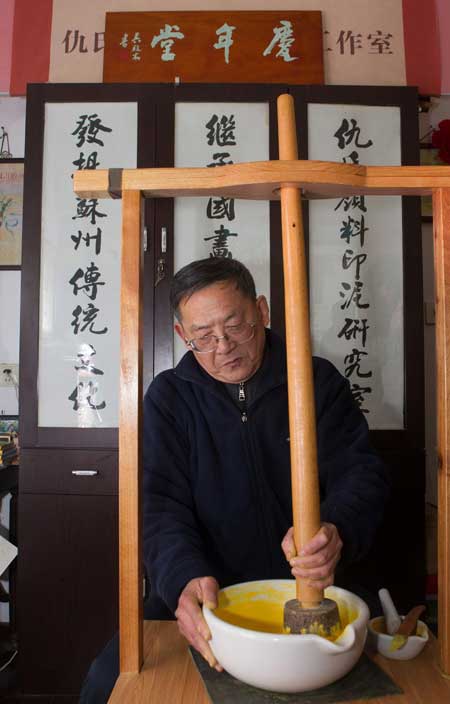Colors of nature
 |
|
An important procedure of making traditional pigments for painting is grinding the mineral powder eight hours a day for 20 days. Photos by Gao Erqiang |
He painstakingly extracts colors from natural materials. His clients are painters who want their masterpieces to look as close to the real thing as possible. But the handicraft, which has been around since ancient times, faces the risk of extinction. Wu Ni reports.
| The long way home |
Qiu Qingnian, the last craftsman making the color pigment for traditional Chinese painting, is concerned that the centuries-old techniques will soon disappear.
The 71-year-old man from Suzhou, Jiangsu province, is skilled in making colors from natural minerals and plants through a set of elaborate procedures. Compared to factory-made chemical paints, the colors extracted from natural materials, according to Qiu, are lustrous, easily dyed and would never fade.
"The minerals are formed by earthly movement over millions of years and the colors they produce will last long," he says.
"Paint the nature with materials from nature - that coincides with the Chinese philosophy of living in harmony with nature," he adds.
In Qiu's old apartment in the city's Gusu district, which is also his workshop, oddly shaped plates and tools make the 40-square-meter house even more crowded.
He has a cabinet showcasing a variety of mineral stones he found from all over the country. Every year, he spends at least two months searching for qualified stones in mines in Yunnan, Guizhou, Fujian and other remote provinces.
"I examine the color and feel the texture - it is likely that only a small part of a huge stone is suitable for making colors," he says, adding that experience is vital in finding the right stones.
For more China Face, here

















